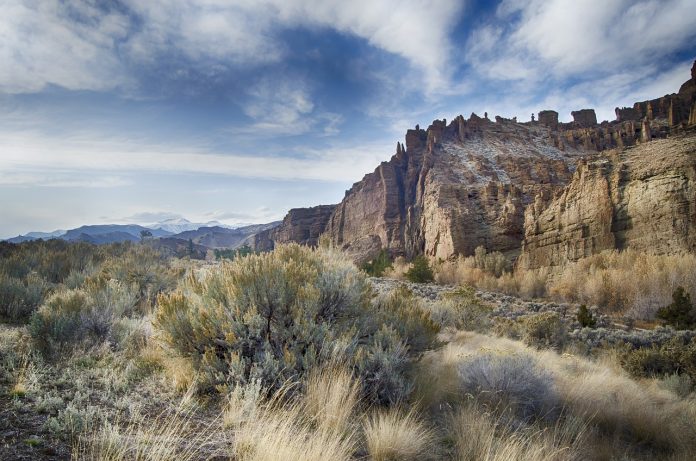By Bethany Blankley
(The Center Square) – While Texas leads the U.S. in energy production, state officials argue that the Biden administration is “getting in the way.” The latest example is the Dunes Sagebrush Lizard (DSL).
Texans in the Permian Basin voluntarily chose to protect it and since 2012, their efforts have paid off with the species’ protected habitat having expanded by millions of acres. Despite this, last month, the U.S. Department of Fish and Wildlife Services designated the DSL as an endangered species. Critics argue doing so was solely a political move in an election year to appease environmentalists and “shut down American oil and gas.”
The DSL only lives in the Permian Basin in west Texas and southeastern New Mexico, the greatest oil-producing region in the country. It’s a “rare species found only in the shinnery oak and sand dune ecosystems … in about 4% of … the 86,000 square mile Permian Basin. Primary threats to the lizard include loss of habitat associated with oil and gas development, sand mining, and changing climate,” the USFWS says.
The USFWS said it made the designation “after a rigorous review of the best available scientific and commercial information, a 90-day public comment period, and a public hearing and information session” and after “100 ranchers and 100 oil and gas partners” in New Mexico and Texas enrolled in voluntary agreements to protect the DSL.
Significantly, the USFWS said oil and gas industry practices preserved the species: “Through advanced horizontal drilling techniques, oil and gas wells are still able to reach most oil and gas reserves without disrupting lizard habitat,” referring to technology invented in Texas that allows for a more efficient and effective extraction of oil and natural gas.
USFWS also refers to a Texas Conservation Plan candidate conservation agreement with assurances (CCAA), which it first approved in 2012.
The CCAA is a voluntary agreement that provides incentives for non-federal landowners to protect potentially endangered species. Approved CCAAs created key initiatives, including avoiding DSL habitats, improving waste management and using remote well monitoring.
When the 2012 CCAA was approved, USFWS’ Southwest Regional Director Dr. Benjamin Tuggle told NPR when “a little-bitty lizard” is potentially listed as an endangered species “there’s always the opportunity for cynicism. … to say that big government is coming in and trying to tell us what to do.” But the CCAA is “a monumental example, of when people sit down, … communicate what it is that they need to continue the economic development … and protect species of this ilk. When they get together and can reach agreement, then it works.”
The Environmental Defense Fund also praised the CCAA, saying, “Farmers, ranchers, and landowners are essential allies … Give them the tools and incentives, like [CCAAs] and they will provide a well-managed habitat at the scale which is needed today,” Reuters reported.
Todd Staples, president of the Texas Oil & Gas Association, agrees, telling The Center Square, “Positive, meaningful actions by industry and ranching is the most effective way in reaching a balance that enables citizens to benefit from a growing economy and sound environment.”
He also said that “Stakeholders across Texas have been clear in demonstrating their continued commitment to sustained responsible development, and the oil and natural gas industry has led the way. Voluntary efforts have resulted in millions of dollars invested and countless hours of research aimed toward ensuring an appropriate balance between protecting the Dunes Sagebrush Lizard while responsibly growing jobs and our economy through the development of oil and natural gas.”
By December 2022, millions of acres were enrolled in the CCAA resulting in “a net acreage conservation gain for the species’ habitat,” The Permian Basin Petroleum Association reported. Millions of dollars in voluntary financial contributions also “funded dozens of reclamation and conservation programs to support the species,” PBPA said.
But “instead of collaborating with key stakeholders,” the Biden administration “put Texas producers in a position that threatens our ability to provide affordable, reliable energy resources to our state and country,” Texas Independent Producers and Royalty Owners Association President Ed Longanecker said. The ESA designation disregards a decade’s worth of conservation progress, ignoring that “conservation has been a top priority of Texas producers for decades.”
Texas Railroad Commissioner Wayne Christian said the ESA designation was really about “shutting down U.S. oil and gas production to win political brownie points, which will only increase inflation and jeopardize billions of lives globally.”
The Texas Public Policy Foundation argued the designation is “unlawful, unnecessary, arbitrary, and capricious.” USFWS presented “next to no scientific data demonstrating that the DSL is presently or will soon be endangered” in an attempt to “forestall energy development in the Permian Basin by listing a species as endangered without cause.”
Attempts to classify the DSL as endangered began on Dec. 30, 1982, according to a USFWS Federal Register report. Since then, the species hasn’t gone extinct.
Bethany Blankley is a contributor at The Center Square.
Originally published by The Center Square. Republished with permission.
To read more about endangered species, click here.


























